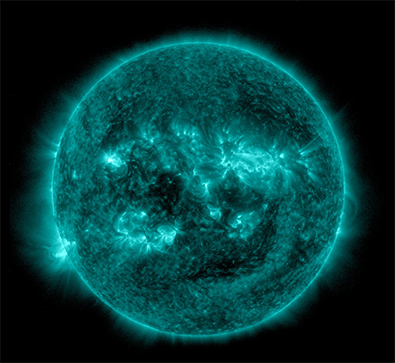Curiosity Mars Rover Tracks Sunspots

While busily investigating bedrock types on Mars’ Mount Sharp and preparing for a drill test, NASA’s Curiosity Mars rover has also been looking up frequently to monitor sunspots on the face of the sun that is turned away from Earth.
Large sunspots are evident in views from Curiosity’s Mast Camera (Mastcam). Scientists temporarily have no other resource providing views of the sun from the opposite side of the solar system from Earth. The sun completes a rotation about once a month — faster near its equator than near its poles. Information about sunspots that develop before they rotate into view of Earth and Earth-orbiting spacecraft is helpful in predicting space-weather effects of solar emissions related to sunspots.

